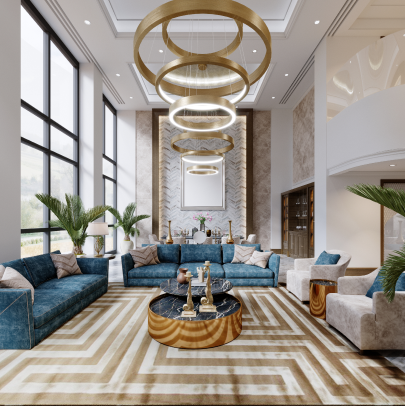Introduction:
In recent years, the retro trend has made a strong comeback in the interior design industry. As nostalgia takes center stage, homeowners and designers alike are embracing the charm and character of past eras. The influence of retro trends can be seen in various aspects of interior design, from furniture styles to color palettes and decor choices. In this blog post, we will delve into how the retro trend is shaping the industry and inspiring creative interior design concepts.
Nostalgic Appeal:
One of the primary reasons for the resurgence of the retro trend is its ability to evoke nostalgia. Retro styles draw inspiration from the past, evoking fond memories and a longing for simpler times. Design elements like mid-century modern furniture, vintage patterns, and iconic decor items create a sense of familiarity and comfort. This nostalgic appeal has captured the attention of homeowners looking to infuse their spaces with a touch of sentimental charm.
Mid-Century Modern Revival:
The mid-century modern style, characterized by clean lines, organic shapes, and sleek aesthetics from the 1940s-1960s, is a prominent retro trend that has regained popularity. The timeless designs of iconic furniture pieces like the Eames Lounge Chair or the Barcelona Chair have become coveted items. Mid-century modern architecture, with its open floor plans and integration of nature, has also influenced contemporary interior design, reflecting a desire for simplicity and functionality.
Playful Colors and Patterns:
Retro trends are known for their bold and vibrant color palettes. From the psychedelic hues of the 1960s to the earthy tones of the 1970s, retro-inspired interiors embrace a range of colors. Pastels, oranges, teals, and mustard yellows are making a comeback, adding a playful and energetic vibe to contemporary spaces. Along with colors, retro patterns such as polka dots, geometric shapes, and floral prints are reemerging, adding visual interest and personality to interiors.
Mix of Vintage and Modern:
Another significant influence of the retro trend is the blending of vintage and modern elements. Many homeowners are now opting for eclectic interiors, combining classic retro pieces with contemporary design. This fusion brings together the best of both worlds, allowing for individual expression and creating unique and visually dynamic spaces. The juxtaposition of old and new adds character and tells a story, making each interior design more personal and memorable.
Sustainable and Timeless Design:
The retro trend aligns well with the growing awareness of sustainable design practices. Retro-inspired furniture and decor are often built with longevity in mind, showcasing durable craftsmanship. By embracing retro elements, homeowners can choose timeless pieces that can be treasured for years to come, reducing the need for constant replacement. This sustainable approach to interior design ensures a lower environmental impact and showcases a commitment to quality and longevity.
Conclusion:
The retro trend has undoubtedly made a significant impact on the interior design industry, inspiring homeowners and designers with its nostalgic appeal, mid-century modern revival, playful colors, vintage patterns, and the fusion of vintage and modern aesthetics. By incorporating retro elements, interior designs gain a touch of character, charm, and personalization. Whether it’s a nod to the distinct styles of the past or a modern reinterpretation, the influence of retro trends adds depth and uniqueness to contemporary interiors.
References:
- “The Retro Trend is Back, Here’s How to Make it Work” by Elle Decor, available at https://www.elledecor.com/design-decorate/trends/g32448518/retro-trend/
- “Retro Revolution: How We Can Embrace Mid-Century Modern Design” by Luxe Interiors + Design, available at https://www.luxesource.com/the-revivalists
- “How to Incorporate Retro Style into Modern Home Décor” by Freshome, available at https://freshome.com/inspiration/how-to-incorporate-retro-style-into-modern-home-decor/
- “Taking Design Inspiration from the Past: The Timeless Appeal of Retro Style” by Decoist, available at https://www.decoist.com/retro-style-interior-design/



Add a Comment